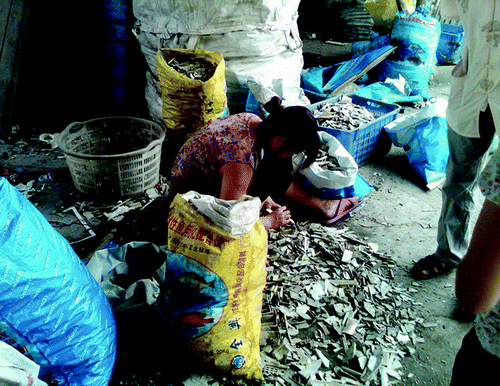Managing Electronic Waste

Photo Credit: Environmental Science & Technology
Over the last week I have been researching electronic waste (e-waste) for a client project. During my research I discovered something that is intuitive but probably not often considered, as our society integrates more electronics—smartphones, readers, tablet computers, etc.—the disposal of these materials is of increasing concern. One of the most astounding facts I found was presented in a 2011 TED video by Mike Biddle “the United Nations estimates that there’s about 85 billion pounds a year of electronics waste that gets discarded around the world each and every year.” Unfortunately, very little of this 85 billion pounds of waste is recycled or even processed in an environmental sustainable manner. Electronic waste not only includes computers and small electronics, also considered in this category are refrigerators, freezers, washing machines, dryers, air conditioners, televisions and DVD players. Most of these wastes are generated from homes which, as discussed in Managing Hazardous Waste at Home, are not regulated by the Environmental Protection Agency (EPA) or most state environmental regulations. Local governments typically will dispose of these wastes for constituents in their household hazardous waste programs. The e-waste compliance concern is therefore limited to those companies to which the EPA’s regulations do apply (i.e. manufacturers and businesses that generate these materials). EPA does not currently have regulations specific to e-waste, but an e-waste is regulated if it meets the definition of a hazardous waste, for more details on this definition see my article entitled What is Hazardous Waste?.
Perhaps the biggest concern with e-waste is the ongoing practice of shipment to and processing of these wastes in developing countries. In many of these nations waste handling practices are largely unregulated and the associated environmental and potential human health effects have huge implications. Electronic wastes typically contain heavy metals (i.e. lead, copper, thallium, and chromium) and other toxic materials like polychlorinated biphenyls (PCBs) and polyvinyl chlorides (PVCs)–all known to persist in the environment and contribute to a number of health problems.
What can we do? We can partner with existing initiatives and non-governmental agencies that are providing recycling, repurposing or reuse services, conducting research, or supporting changes in the handling of these wastes. Following are a few organizations I found to have ongoing efforts in this area:
Solve the E-waste Problem (StEP) an initiative of multiple UN organizations that include members from industry, governments, international organizations, NGOs and academia. They tackle sustainable e-waste practices through five task forces: Policy, Redesign, Reuse, Recycle and Capacity Building.
The Restart Project designed to advance the repair, remaking, and responsible use of electronics. Their “idea is to promote positive behaviour change in relation to electronics consumption.”
The E-Stewards Initiative a program by the Basel Action Network, initially created to identify but now also certifies companies that process e-waste using sustainable and safe methods. One of my favorite features of their website is the ability to search for e-Steward recyclers.
E-waste may not top the list of priorities when it comes to compliance, however it should top the list of environmental issues that have global impact.
Do you know of other projects or NGO’s that have ongoing e-waste efforts? If so, add them to the list by placing a comment below.
